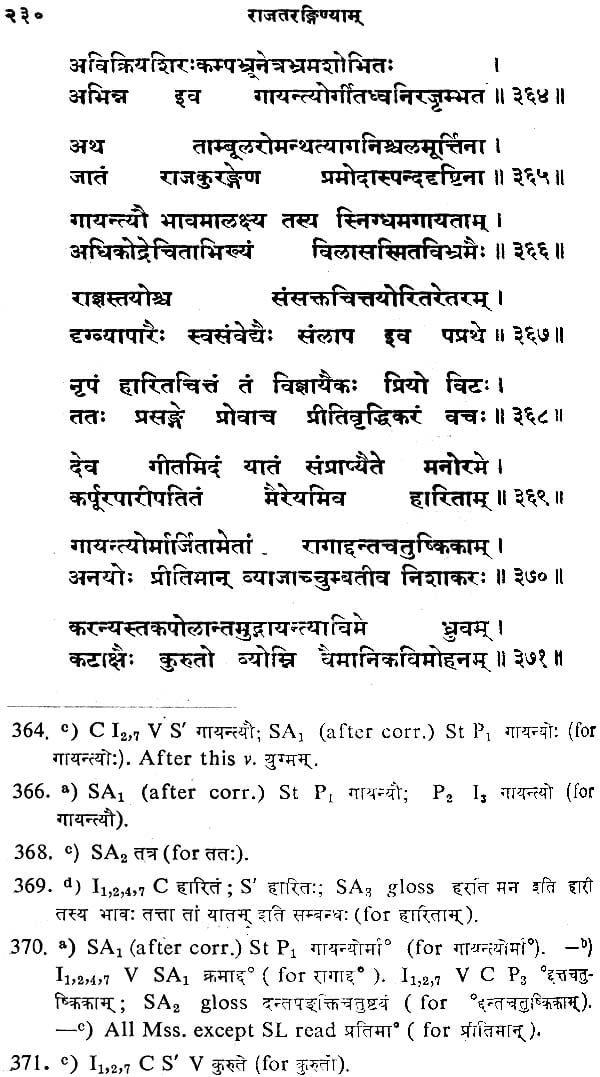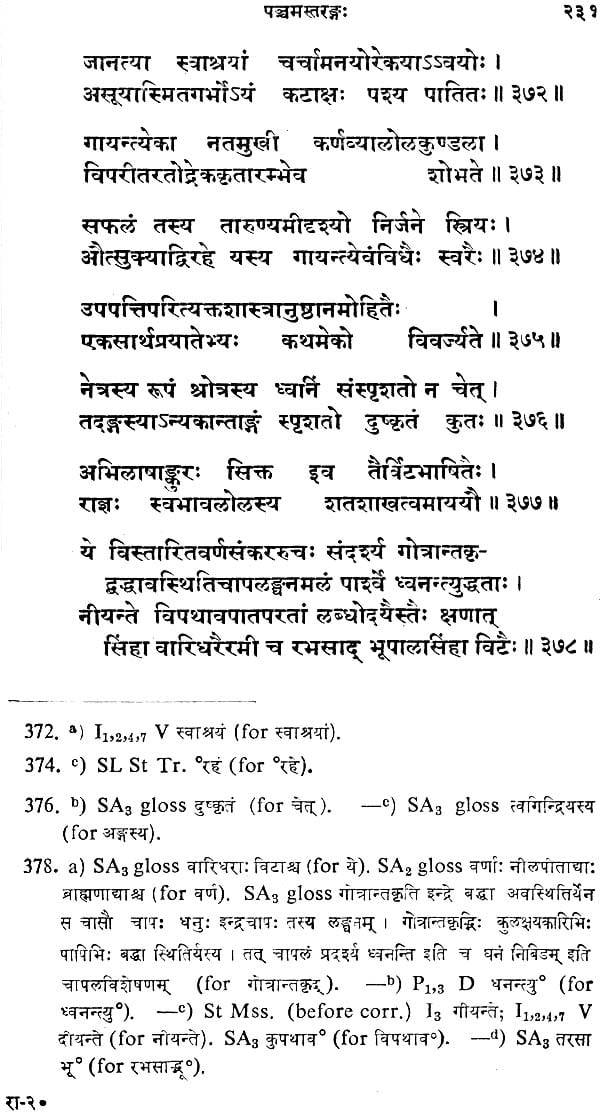
राजतरंगिणी: Rajatarangini - Critical Edition (Set of 4 Volumes) (An Old and Rare Book)
Book Specification
| Item Code: | NZE586 |
| Author: | श्री विश्व बन्धु (Shri Vishva Bandhu |
| Publisher: | Vishveshvaranand Vedic Research Institute, Hoshiarpur |
| Language: | Sanskrit Only |
| Edition: | 1967 |
| Pages: | 1895 |
| Cover: | Hardcover |
| Other Details | 8.5 inch X 5.5 inch |
| Weight | 2.40 kg |
Book Description
The importance of Itihasa and Purana as a kind of literature embodying collection of heroic, cosmogonic and genealogical legends of yore was well recognized even in the hoary age of the Vedic texts from the Atharvaveda downwards. The Rgveda itself contains a number of hymns which easily lent themselves to their legendary interpretations as proposed by the Aitihasikas and in some cases, as accepted even by the Nairukta, Yaska and this literature was to the extent of being designated as a Veda by itself, it seems to have remained, generally an admixture of history and mythology.
This brings out in bold relief the great importance of the Kashmirian poet, Kalhana’s 12th century production, namely, Rajatarangini, being a genuine historical work, chronicling the reigns of the Kings of Kashmir from c 2448 B.C. to 1148 A.D. The three other writers, namely, Jonaraja, Srivara and Suka, who followed Kalhana, further continued his chronicle, bringing it down to the annexation of Kashmir by the great Mughal Emperor, Akbar in 1586 A.D.
The Royal Asiatic Society of Bengal published from Calcutta in 1835 an edition of the entire quadripartite Rajatarangini. It was based on a single Devangari transcript, very faulty and carelessly prepared from its Sarada original. There were numerous lacunae in the transcript which were filed by the editing Pandits themselves making the production very unreliable. The French scholar, A. Troyer, the then Principal of the Government Sanskrit College, Calcutta closely studied that edition and was able to check up the misprints in Kalhana’s Tarangas I-IV only and publish the same afresh in 1840 from Paris under the auspices of the Societe Asiatique. Beyond removing the said misprints, Troyer, in the absence of new manuscript material, could improve the text in any other way, Durgaprasada, who had been Senior Pandit in the Oriental College of the Punjab University at Lahore, prepared his edition of Kalhana’s Rajatarangini in Tarangas I-VIII from three modern Devanagari manuscripts of the work, belonging to the Bombay Government Collection. This edition in two volumes was published, posthumously, on behalf of the Government of the Bombay, by P. Peterson in the Bombay Sanskrit Series (Volume XLV and LI) during the years 1892-94. Even though this edition could not fully satisfy the requirements of modern critical text editing, it was positively, very much superior to the aforesaid previous two editions and the erudite editor’s critical acumen stood him in very good stead when he was engaged in preparing it, most carefully. He succeeded in clearing many ambiguous reading and suggesting a number of emendation wherever he found the basic manuscripts defective and unintelligible. The famous geographical explorer, M. A. Stein, who too had been contemporaneously connected with the aforesaid college at Lahore as its Principal and likewise engaged on his study Kalhana’s Rajatarangini, brought out his edition of that work in Tarangas I-VIII in 1892. He spared no pains in producing a standard critical edition, but there still remained good many lacunae along with unsettled and ambiguous readings. Therefore, he further continued with great perseverance ana at considerable personal sacrifice his study of this work, making several tours of Kashmir to acquaint himself, first hand with its topography as well as to delve still deeper into the related manuscript material as then available. These immense and selfless labours of his duly fructified in 1900 with the publication of his English translation of the said work, with copious text critical and exegetical footnotes. Herein he could fully utilize Durgaprasada’s aforesaid edition from which he candidly adopted, with acknowledgement, a number of emendations as well as suggestions and also, make due use of a new manuscript being described as SL under B in the sequal which came out to be his most important find even though made by pure chance. But while Durgaprasada’s work on Kalhana’s Rajatarangini got complemented in a way through the addition to its two volumes of a third volume consisting of the aforesaid three later Rajatarangini texts which P. Peterson prepared from related manuscripts and published in the Bombay Sanskrit Series as its Volume LIV, it is a pity that unfortunately for this work, Stein did not extend his activity any further in this direction.







